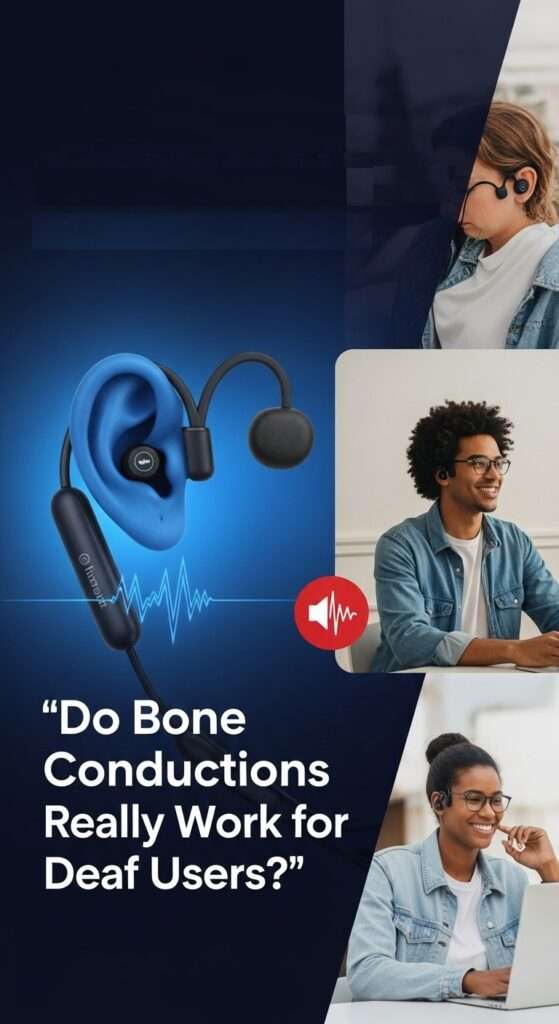Hey there! So, you’ve probably heard about bone conduction headphones they’re those funky gadgets that sit on your cheekbones and send sound through your skull instead of your eardrums.
Sounds like sci-fi, right? But the big question on everyone’s lips: Do bone conduction headphones actually work for deaf users? Well, pull up a chair, because I’ve dug into this and am here to spill the tea with a sprinkle of sarcasm and some real talk.
1. What Are Bone Conduction Headphones Anyway?
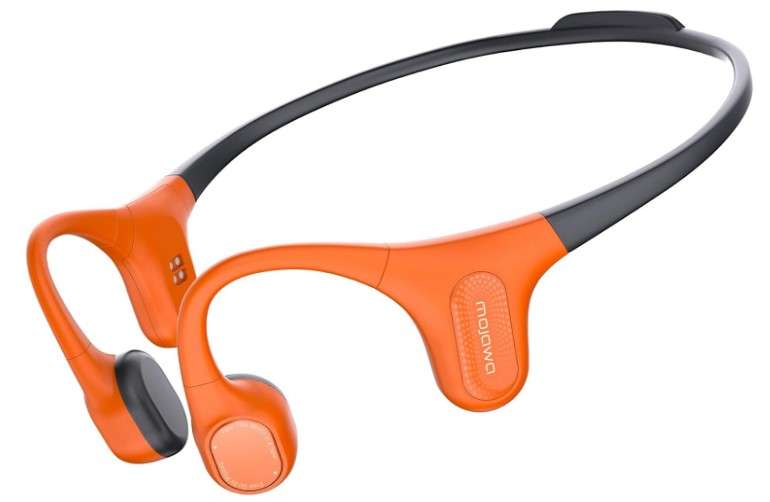
Before we jump headfirst into whether they work for deaf users, let’s get clear on what these headphones actually do.
How Bone Conduction Works
Instead of blasting sound waves into your ear canal like regular headphones, bone conduction devices vibrate your skull bones. These vibrations skip the eardrum and go straight to the inner ear (cochlea), where the magic of hearing begins. Imagine your skull as a giant speaker cone. Cool, right?
This tech is booming among runners, cyclists, and anyone who wants to be aware of their surroundings while jamming out. But does it deliver for deaf folks? Let’s see.
2. Types of Deafness and How They Relate to Bone Conduction
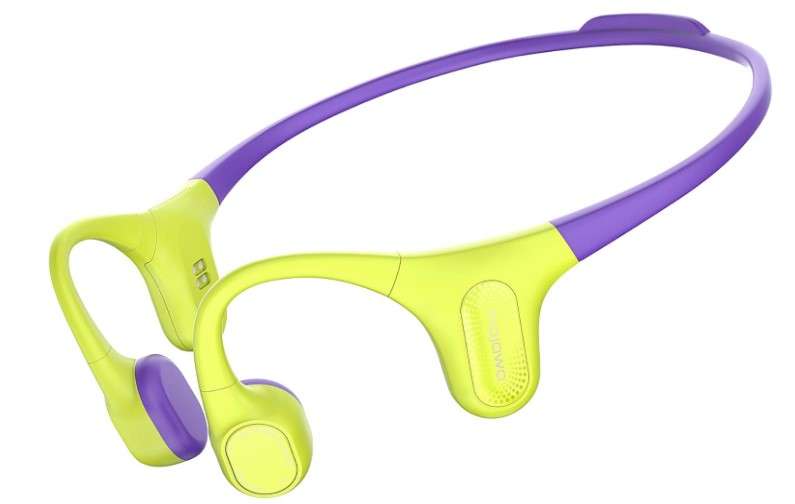
Here’s the kicker. “Deafness” isn’t just one thing it’s kinda like calling all desserts “sweet stuff” without specifying cake, pie, or brownies.
Conductive vs. Sensorineural Deafness
- Conductive Deafness: The problem lies with the outer or middle ear, like a clogged pipe. Here, bone conduction can be a game-changer since it bypasses the usual sound route.
- Sensorineural Deafness: The issue is with the inner ear or auditory nerve. Sorry to break it to you, but if your cochlea or nerve is toast, bone conduction might not do much good.
- Mixed Deafness: A combo of both, which complicates things further.
Bone conduction headphones shine brightest when that middle ear blockage is the culprit. If your cochlea is functional, these can literally rock your world. But if your inner ear’s fried, yeah, the fun’s probably over.
3. Real Talk: Do They Work for Deaf People?
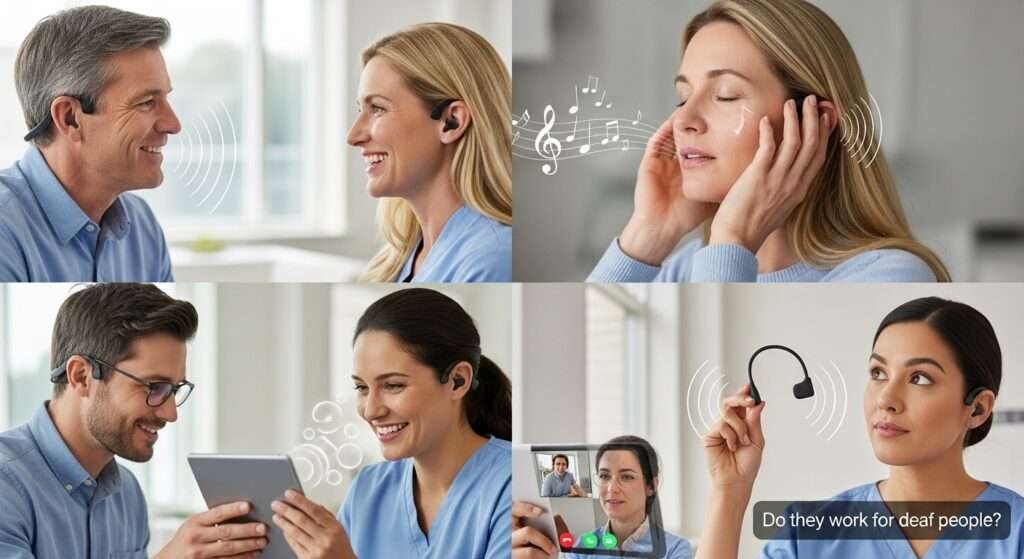
So, the million-dollar question. Here’s the honest scoop based on science and user reports.
When Bone Conduction Headphones Can Work
- If you have mild to moderate conductive hearing loss, bone conduction headphones can bypass damaged eardrums or ear canals effectively.
- Folks with single-sided deafness (SSD) find these headphones helpful because the sound can transmit through the “good” side’s bones.
- Hearing aid users sometimes pair bone conduction headphones with their aids for a nifty combo of sound clarity and situational awareness.
When They Probably Won’t Work
- For those with severe to profound sensorineural deafness, bone conduction headphones typically won’t help. Why? Because the cochlea or auditory nerve that decodes the sound isn’t functioning properly. It’s like sending a message to a dead phone.
- If you’re completely deaf (no functioning cochlea or auditory nerve), bone conduction won’t restore hearing. Sorry, no miracles here.
4. So, What’s the Alternative for Deaf Users?
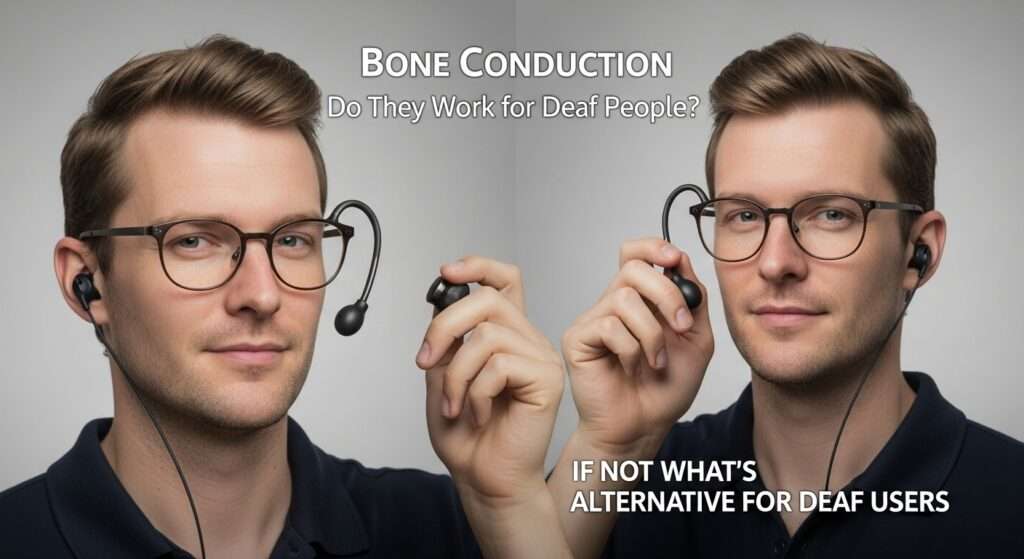
If bone conduction tech sounds like a no-go for you, there’s still hope!
Cochlear Implants and Hearing Aids
- Cochlear implants directly stimulate the auditory nerve and can help some profoundly deaf people “hear.”
- Traditional hearing aids amplify sounds but still rely on a working middle and inner ear.
Vibrotactile Devices
- Some research is exploring vibrotactile devices that turn sounds into vibrations you can feel on your skin kind of like a wearable bass drop. Pretty wild and still niche, but promising!
5. My Two Cents on Bone Conduction for Deaf Users

I’ve always been intrigued by how technology tries to hack our senses. Bone conduction headphones? A clever hack, but not the Houdini escape for all types of deafness.
In my experience, if you have partial hearing loss or want something that doesn’t block your ears, they’re legit handy. But if you’re fully deaf, it’s like trying to use a fancy car with no engine. Fun concept, poor execution.
Ever noticed how some folks rave about these headphones like they’re magic? Well, in the hearing world, they are–but only under specific conditions. So, no, they aren’t a one-size-fits-all miracle.
6. Pros and Cons of Bone Conduction Headphones for Deaf Users
Let’s break it down:
| Pros | Cons |
|---|---|
| Bypass damaged eardrums easily | Don’t work if cochlea or hearing nerve damaged |
| Great for single-sided deafness (SSD) | Sound quality often less rich than traditional headphones |
| Keep ears open, so you stay aware | Can be uncomfortable for some people |
| Ideal for mild to moderate hearing loss | Not a hearing solution for profound deafness |
7. What to Look for When Buying Bone Conduction Headphones

Thinking about trying this tech out? Here’s what I look for:
- Comfort: They sit against your skin, so if they irritate, that’s a dealbreaker.
- Sound quality: Don’t expect concert hall levels, but clarity matters.
- Battery life: Nothing worse than tech dying mid-run.
- Durability: Especially if you’re active, water and sweat resistance is a must.
Brands like Aftershokz have some solid options, but there are others worth checking out. FYI, trying before buying is a smart move.
Final Thoughts: Are They Worth It for Deaf Users?
To wrap it up, bone conduction headphones are like that friend who’s super helpful in some situations but kinda useless in others. If you have conductive hearing loss or SSD, they might be a game-changer. But if your cochlea or hearing nerve is kaput, they probably won’t help much.
Still, they’re funky, futuristic, and worth exploring if you want to hear the world through a slightly different lens. Don’t expect miracles, but they’re pretty darn cool tech.
Ready to rock some bone conduction headphones? Or still skeptical? Either way, now you have the lowdown to make a smart call. And hey, if you try them out, drop me a line—love hearing real user stories (in any sense of the word)!
